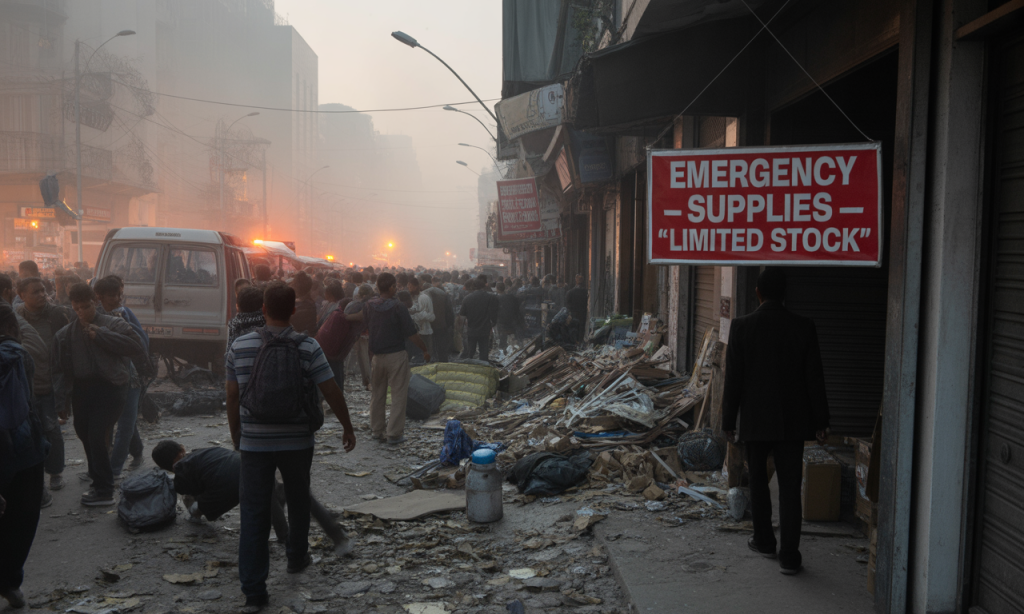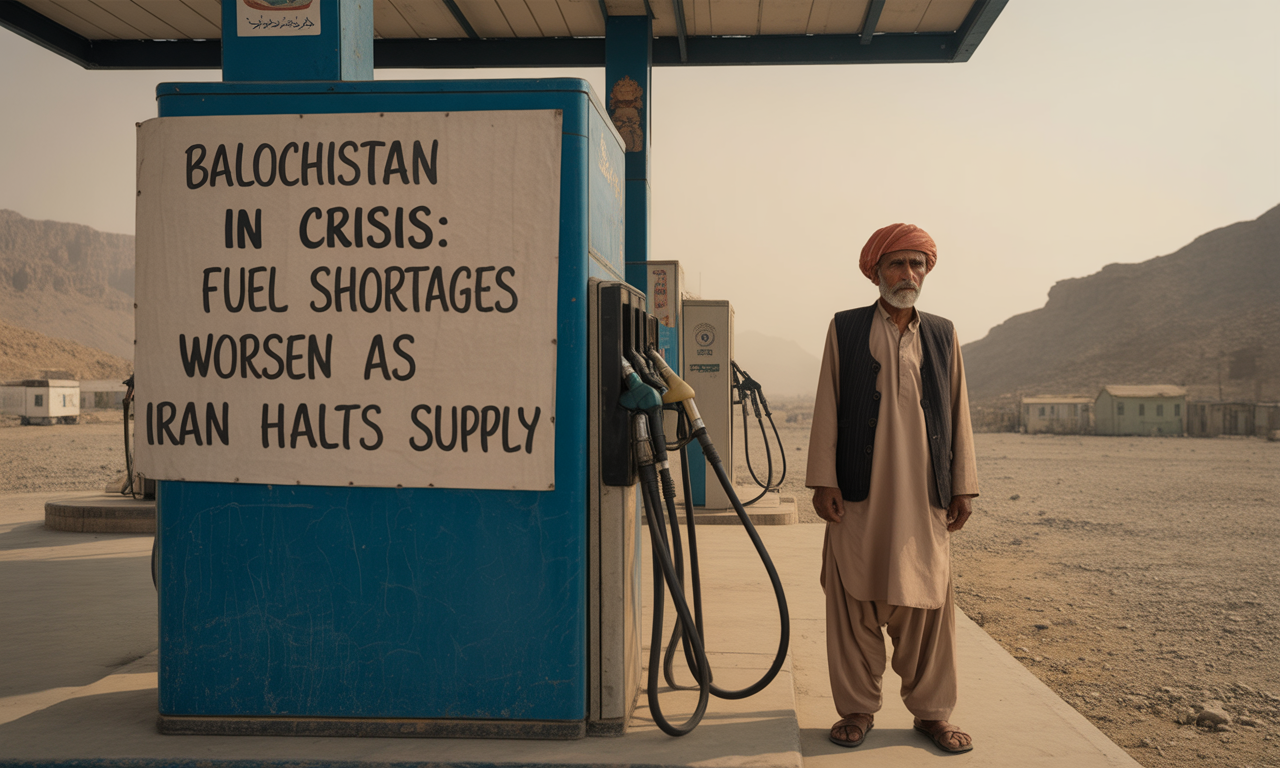The largest province of Pakistan in terms of land (area-wise), Balochistan, is now struck by escalating fuel shortages as several of its districts have been brought to a standstill. The crisis erupted after Iran’s fuel supply was cut off due to heightened regional tensions. Iran, squeezed by international events and border security concerns, has clamped down on trade through unofficial and semi-official routes that have operated as a lifeline for fuel-starved towns in southwestern Pakistan for years.
Border Closures and Fuel Dependency
Many parts of Balochistan have relied on Iranian petrol and diesel carried through official and unofficial cross-border routes for decades. This fuel has been historically less expensive than the domestically provided fuel in Pakistan and more convenient for communities close to the Iranian border. The border trade suspension has led to severe fuel shortages in towns like Mashkel, Panjgur, Turbat, and Gwadar. Pumps in many of these areas have shut down entirely, and the ones that remain open do so sporadically and with scant supplies.
The Collapse of Transportation
One of the first effects of the fuel shortage has been the disintegration of the transportation network. Buses, taxis, rickshaws, and private vehicles are off the roads in cities and small towns . School-going students cannot attend school due to a stand-off in the school transport. Daily wagers whose earnings are dependent on transport have been left without work. Inter-district movement of goods has virtually come to a standstill, impacting food, water, and medicine supplies. Emergency vehicles are also struggling, fuelling fears that health services and police are struggling to cope.
Public Panic and Black Market Surge

Panic buying spiked across afflicted regions as the situation devolved. Worried there would be no more gas, residents were already queuing at the few functioning pumps. In Quetta and the surrounding areas, lines at gas stations were hours long. Consumers who could pay an inflated price out of pocket are even worse off. Petrol prices, which are usually fixed at a government-regulated price, have gone through the roof. In some border towns, the price exceeded what most residents could afford. Few official fuel supplies have been available, and it has been an opening for profiteers to make life even more complicated for an already struggling population.
Conflicting Government Statements
And public confusion has been compounded by the response from provincial and federal authorities. Some officials have said there is no genuine fuel shortage and only illegal petrol stations have been hit due to a crackdown on smuggling. The government, some say, is actively engaged in trying to order the supply chain back, albeit little has been said about how, when, or even if this will happen. The people’s trust in the official propaganda dispensed with a human face has been destroyed by a lack of transparency in communication and relief measures.
The Root of the Crisis
Balochistan’s historic reliance on Iranian oil is at the core of this conundrum. Historically, relying on smuggled or semi-official imports has helped the province avoid some of the costs and inefficiencies of domestic supply chains. However, this informal structure has made Balochistan especially susceptible to external shocks. The region feels the change most directly whenever regional turmoil, border tension, or policy changes occur. The first impact is on the supply of fuel. The ongoing crisis highlights the structural fragility of this model. The jurisdiction is not being extended to a resilient province with no robust centralized petroleum supply and fuel distribution system in the event of an abrupt disruption.
Economic Disruption Across the Province
Fuel is crucial for transport and an essential input for agriculture, small businesses, and construction. Farmers use petrol and diesel in some remote districts to fuel irrigation systems and tractors. As stocks have dwindled, agricultural productivity will likely drop in places that already suffer from water shortagesmany small business owners who depend on generators or fuel-powered machinery also feel the sting. And in the construction industry, which relies heavily on fuel for logistics and machinery, projects have come to a standstill or been postponed indefinitely. Economic activities throughout Balochistan have come to a halt in an alarming situation of long-term unemployment and inflation.
Geopolitical Context and Broader Implications
This crisis also occurs against the backdrop of increased geopolitical turmoil in the Middle East, with a focus on Iran. Hobbled by internal unrest and rising international pressure, Iran has found it increasingly challenging to keep fuel shipments running across its borders. There is also a mounting concern that if tensions continue to rise, Iran could stop all fuel exports or supply only its domestic needs. Those external pressures have immediate implications for Balochistan, illustrating the perils of relying too much on a single politically unstable supply source. The penury of the fuel crisis is a reminder that local stability is typically linked to broader international currents.
Policy Failures and Structural Neglect
The fuel shortage is also a symptom of deeper policy failures provincially and federally. Baluchistan has always remained a neglected region in terms of national planning and development. Infrastructure, such as energy pipelines, road networks, and fuel storage, has also not kept pace with other provinces. The dependence on informal networks for fuel is a symptom of that neglect. If proper mechanisms, different channels, and more solid infrastructure had existed, the current situation and the crisis could have been lessened or averted. The continuing shortfall underscores the urgent need for investment in infrastructure, regulatory supervision, and crisis planning.
Social Unrest and Public Sentiment
In other places, the dearth has prompted protests and mounting frustration. Commoners have come out on the streets to push the government for their rights. Some protests have become confrontational, especially where people feel abandoned by authorities. The mood of the public is becoming more volatile. Several residents say their concerns are being disregarded in large parts of the country, where things worsen daily. The exclusion, marginalisation, is deeply felt; it is hazardous because you risk a wave of broader social unrest if this does not stop.”
The Way Forward
There is a need for immediate and long-term responses to the crisis. In the immediate term, the government needs to restart the supply of fuel by using emergency stocks, facilitating secure transportation through Karachi, and at the same time keeping the main petrol stations working in the province. An attempt should also be made to control underground markets and price manipulation. In the longer term, a more radical shake-up is required. That is, of investment in commuter transportation links, clean and regulated fuel distribution systems, and the availability of fuel from multiple sources to avoid any one country being relied upon for the majority of what we require, all the necessary demand constraints allowing. Provincial plans should also consider that border areas are susceptible and involve plan B for potential future shocks.
Conclusion
The fuel crisis in Balochistan has highlighted the tenuousness of the systems that provide for day-to-day existence in one of Pakistan’s most neglected provinces. The loss of Iranian fuel has more widespread effects, and everyone is feeling it from students who cannot get to school to farmers who cannot pump water to irrigate their fields. As government officials argue over the scope of the crisis, individual people are experiencing its impact. This should be a wake-up call. Without the committed financial outlay and structural reform, Balochistan, by far the most economically disadvantaged province in Pakistan, is not only impacted in terms of fuel but also impacted by insecurity. We need a focused, empathetic strategy to provide relief now and resiliency for the future.
